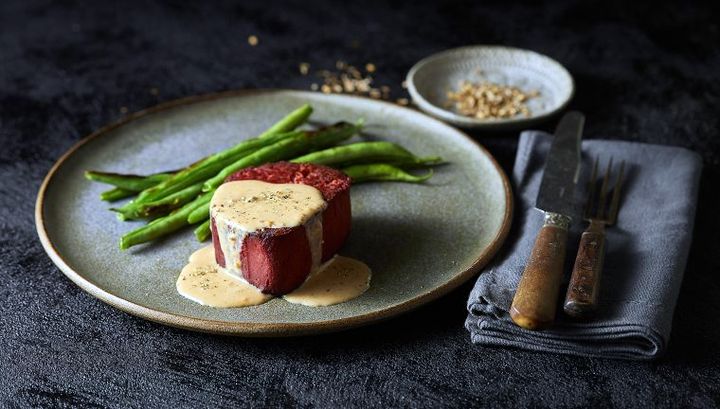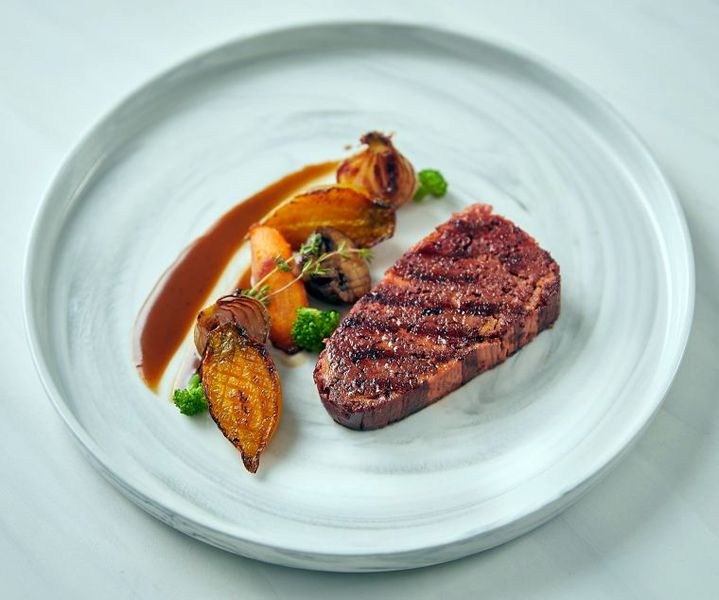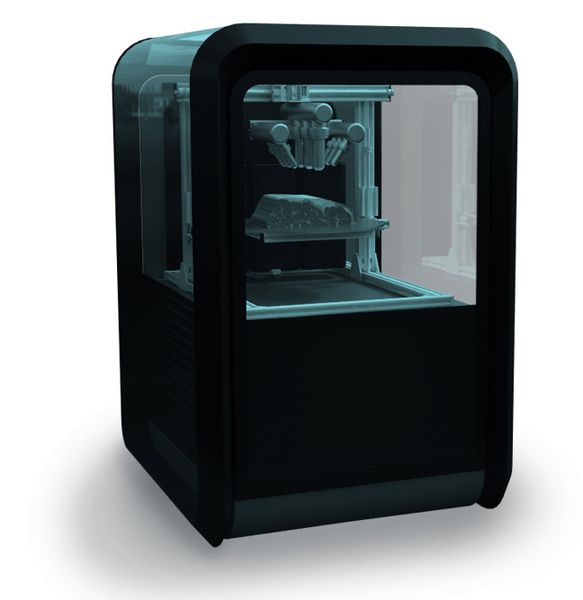
A company hopes to begin mass production of 3D printed meat.
Israeli startup Redefine Meat announced plans to enter the food market with their proprietary 3D printed steaks, which they describe as “Alt-Steak”. They say:
“Redefine Meat today unveils the world’s first Alt-Steak plant-based products, with market testing at select high-end restaurants to start later this year. Created using Redefine Meat’s patent-pending 3D meat printing technology, the company’s Alt-Steak products have the texture, flavor and appearance of beef steak and can be produced in the volume and cost to enable large-scale market launch.”
Previously, the company had received a significant investment.
It appears they have trademarked the term “Alt-Steak”. It’s “Alt” because it actually contains no meat at all. Instead, it’s a secret concoction of plant-based products mixed together to simulate meat.
That’s been attempted many times previously by other parties, in particular Beyond Meat and Impossible Foods, which have developed “alt ground beef” products. However, ground beef is not a steak, and there’s a reason such a product has not yet appeared: texture.
Food is a highly complex thing, as the eating experience involves a number of senses. Yes, taste is obviously important, but so is the aroma, which actually constitutes a far larger portion of the experience than you might imagine. But then there’s texture.
3D Printed Meat Texture

The texture of a food product is critically important. Food textures are also complex, as they could include rigid, soft, liquid, stringy or other structural elements. These naturally-evolved patterns are quite difficult to replicate artificially, particularly at scale and with economy.
This is one reason why Impossible Foods and Beyond Meat have succeeded: ground beef doesn’t have a lot of texture and thus the problem is mostly avoided.
Steak, on the other hand, is a fibrous product that includes embedded fats and flavors in a pattern easily recognizable by steak consumers. This is really the core of Redefine Meat’s technology.
They apparently use a proprietary 3D printing system to produce Alt-Steaks, and this makes a lot of sense. A 3D printer could control the internal geometry of the product. One can even imagine fibrous strands being extruded to mimic the natural structures of meat.
It’s not quite clear how the system works, but they do say this:
“Redefine Meat technology produces animal-free meat with the same appearance, texture and flavor of animal meat, from natural and sustainable ingredients.
Our technology combines proprietary 3D meat modeling, food formulations and food printing technology to deliver a new category of complex-matrix ‘meat’ in a cost effective and scalable way.
Redefine Meat has 95% smaller environmental impact, no cholesterol, and is more affordable compared to animal meat.”
Redefine Meat 3D Printer

However, Redefine Meat does provide an image of what seems to be their production 3D printer, so let’s take a look at it and see what we can find out. Here’s my observations of this device based on the image alone:
- It seems to employ extrusion technology, which makes sense for squishy meat-like ingredients
- There appear to be ten different extruders / nozzles, which suggests up to ten ingredients
- The separate nozzles means the “recipe” could involve varying the amounts emerging from each nozzle during the print
- The print visible on the bed seems a lot larger than a single steak, so it seems they print a large piece and then cut it into individual steaks
- The unit is enclosed for environmental control during printing but also perhaps for food safety concerns
- It’s not clear how large the device might be, but I’d guess it is able to 3D print a chunk of mean up to as much as 400mm on a side
- It is entirely unclear how fast the device can produce meat, but we know that paste extrusion is not fast and a proper steak structure would require reasonable resolution
Alt-Steak Production
With a device like this it certainly seems possible to produce steak-like objects, given the correct ingredients and internal 3D model. But what does concern me is the production throughput of the machine.
If the device is producing only one chunk of steak per 12 hours, as might seem likely given the state of paste extrusion tech these days, the daily output of a machine might be only two chunks X 8 cuts = 16 steaks. Let’s say 20 to be generous.
A machine producing only 20 steaks per day is not a major production line. In order to meet the goals of the company there would likely have to be hundreds of such machine operating in parallel, all producing steaks as fast as possible.
Another question is the financial feasibility of the device. Let’s say the device costs US$100,000. If it were to be operated continuously for, say, three years, it might produce 7300 Alt-Steaks. That means each steak would have to carry nearly US$14 in machine costs, let alone the cost of ingredients (likely high) and operator time.
Nevertheless, it should be interesting to see how this proceeds, as there is significant interest in alt-meat products and that is surely to grow as the future unfolds.
Via Redefine Meat
